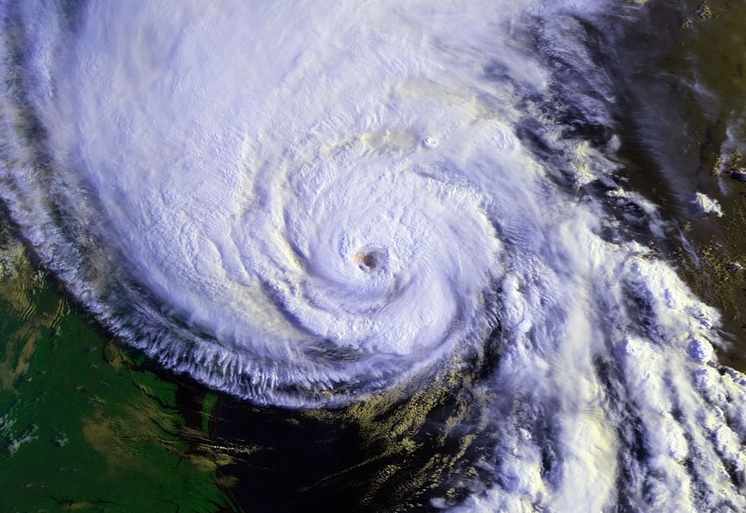Forecasts for the 2019 Atlantic hurricane season have slowly been increasing, in terms of numbers of storms, as forecast teams have included the activity so far and taken into account that El Niño is now not expected to be an influence through the rest of this year.
 The Climate Prediction Center of NOAA officially came on-board (the Australians highlighted this at the start of July, as we reported) with the reduced chance of El Niño conditions emerging in 2019 yesterday, saying that the climate has now transitioned to ENSO-neutral.
The Climate Prediction Center of NOAA officially came on-board (the Australians highlighted this at the start of July, as we reported) with the reduced chance of El Niño conditions emerging in 2019 yesterday, saying that the climate has now transitioned to ENSO-neutral.
The CPC believes that ENSO-neutral conditions are most likely to continue through the Northern Hemisphere winter 2019-20 now, giving a 50-55% chance that no El Niño conditions will occur.
This has ramifications for the way hurricane forecasting teams work, of course and will also be of note to the watching insurance, reinsurance and insurance-linked securities (ILS) industry.
With El Niño assumed by many forecasters to have an influence on levels of Atlantic tropical storm and hurricane activity (depressing or suppressing the chances of tropical storms in the Atlantic) and it’s been mentioned in practically every forecast update as a factor, the reducing chances of El Niño conditions means forecasts have slowly ticked up for the 2019 Atlantic hurricane season.
Now, the latest forecasts have all ticked up slightly in recent days, with the most recent being NOAA’s own, in which they now say the greatest chance for the 2019 hurricane season is for “above normal” levels of tropical storm and hurricane activity in the Atlantic basin.
NOAA has increased its forecast slightly to 10 to 17 named tropical storms (up from a 9 to 15 forecast in May), 5 to 9 hurricanes (up from 4 to 8 in May) and 2 to 4 major hurricanes (unchanged).
Perhaps more tellingly of what could be expected from the Atlantic tropics this 2019 hurricane season, NOAA now says their forecasters have increased the probability that there is an above-normal Atlantic hurricane season to 45%, up from 30% from the May forecast.

“NOAA forecasters monitoring oceanic and atmospheric patterns say conditions are now more favorable for above-normal hurricane activity since El Nino has now ended,” the agency explained.
“El Nino typically suppresses Atlantic hurricane activity but now that it’s gone, we could see a busier season ahead,” Gerry Bell, Ph.D., lead seasonal hurricane forecaster at NOAA’s Climate Prediction Center explained. “This evolution, combined with the more conducive conditions associated with the ongoing high-activity era for Atlantic hurricanes that began in 1995, increases the likelihood of above-normal activity this year.”
The Tropical Storm Risk (TSR) forecast team also issued its August update in the last few days, increasing the number of named storms it forecasts for the 2019 hurricane season to 13, an increase of 1, while sticking with 6 hurricanes and 2 major hurricanes.
Again, TSR cited El Nino and the chances of it not being such an influence through the season as one reason, but also was including storms already seen.
Now, with El Nino seen as not on the cards for 2019, the chances of a more active hurricane season are being factored into the forecasts.
Taking the new forecast data and adding it to all of the other hurricane forecasts we track over on our dedicated web page gives us an Artemis average forecast for the 2019 hurricane season of 13 named tropical storms, 7 hurricanes and 3 major hurricanes, with an average ACE forecast from those who provide it of 105.
These latest updates have lifted the average hurricanes by 1, from 6 to 7, while the average ACE forecast has lifted from 101 to 105.
Of course, not everyone believes that ENSO and El Niño should be given such credence as a predictor for hurricane and tropical storm activity.
As Brendan Lane Larsson, Co-Founder, Climatologist, Physical Meteorologist at AbsoluteClimo, told us recently, “Much of the insurance industry continues to struggle with the El Niño La Niña Southern Oscillation paradigm, a 30 year old antiquated conceptual model poorly suited for today’s enterprise climate risk management and financial decision making needs. Trying to forecast seasonal or annual financial variability and economic impacts linked to ENSO is like fortune-telling from reading tea leaves.”
The increase in forecasts and probabilities for the hurricane season will of course put the insurance, reinsurance and insurance-linked securities (ILS) market on more of a watch-footing for the coming months.
But as ever it is vital to note that it does only take on storm making landfall in a highly populated and urbanised area for significant impacts, loss of life and ultimately losses to the insurance and reinsurance sector to occur.
Forecasters in general continue to warn of warm waters in the Gulf and close in to the U.S. shoreline, which does mean any storm tracking close has a chance of intensification, wind shear allowing.
For now the Atlantic tropics look quiet, with no chance of activity over the coming week it seems. But the coming months will undoubtedly bring activity that we will cover and the industry will be watching closely.
You can track forecasts for and activity during the 2019 Atlantic hurricane season here on Artemis.
 View all of our Artemis Live video interviews and subscribe to our podcast.
View all of our Artemis Live video interviews and subscribe to our podcast.
All of our Artemis Live insurance-linked securities (ILS), catastrophe bonds and reinsurance video content and video interviews can be accessed online.
Our Artemis Live podcast can be subscribed to using the typical podcast services providers, including Apple, Google, Spotify and more.































